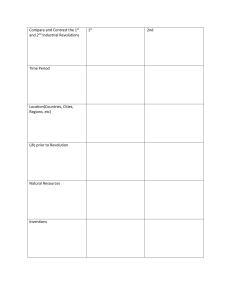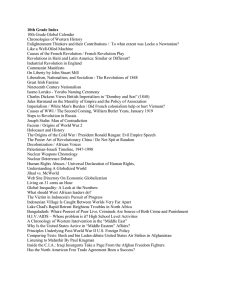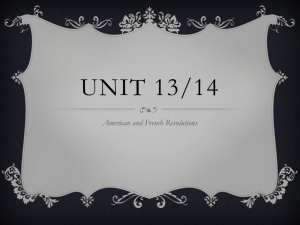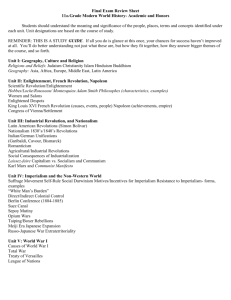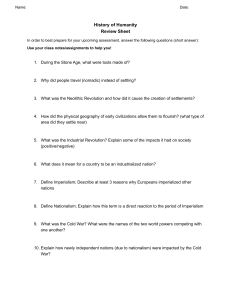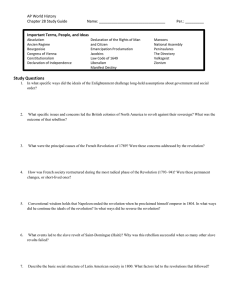Unit 5 Test Review: Revolutions, Enlightenment, Imperialism
advertisement
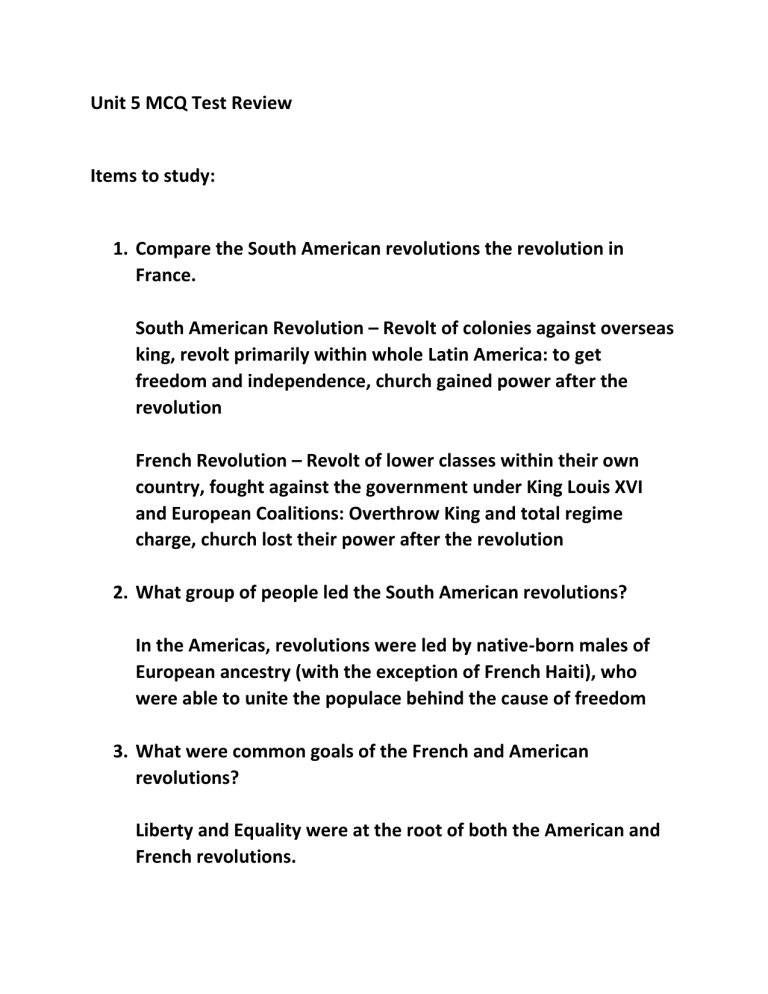
Unit 5 MCQ Test Review Items to study: 1. Compare the South American revolutions the revolution in France. South American Revolution – Revolt of colonies against overseas king, revolt primarily within whole Latin America: to get freedom and independence, church gained power after the revolution French Revolution – Revolt of lower classes within their own country, fought against the government under King Louis XVI and European Coalitions: Overthrow King and total regime charge, church lost their power after the revolution 2. What group of people led the South American revolutions? In the Americas, revolutions were led by native-born males of European ancestry (with the exception of French Haiti), who were able to unite the populace behind the cause of freedom 3. What were common goals of the French and American revolutions? Liberty and Equality were at the root of both the American and French revolutions. 4. What was the Meiji Restoration and how did it impact Japan? Following the Restoration, Japan saw significant political, economic and social development throughout the Meiji period. The reforms undertaken during the reign of the Meiji emperor led to Japan’s modernization and Westernization paving the path for it to become a prominent worldwide power. 5. What were major impacts of the Enlightenment? The Enlightenment aided in the fight against ecclesiastical abuses, the establishment of science as a source of information, and the defense of human rights against tyranny. It also brought us modern education, medicine, republics, and representative democracy, among other things. 6. What was Liberalism? Goals and impacts? Liberalism, or the belief in liberty, equality, democracy, and human rights, has ben linked to intellectuals such as John Locke and Montesquieu throughout history. Liberals sought and established a constitutional order that prized important individual freedoms, such as freedom of speech and freedom of association; and independent judiciary and public trial by jury: and the eradication of aristocratic privileges. 7. How did rising nationalism transform nations in Europe and abroad? Nationalism had a crucial role in the development of Europe in the nineteenth century. By destroying the long-established institutions of power and control in France and the provinces gained by Napoleon, the French Revolution played a crucial part in Europe’s political development. 8. What were the purposes of foot binding (China) and face painting (Japan)? Foot-binding lasted so long because it had a clear economic rationale: it was a technique to ensure that young girls sat still and helped create items like yarn, fabric, mats, shoes and fishing nets that families relied on for money – even if the girls were persuaded it would make them more marriable. The desire to be attractive has existed since the dawn of time. A pale skin tone has traditionally been linked with attractiveness in Japan. Women powdered their faces with a white powder called oshiroi during the Nara Period (710-94), and a white facial color remained a symbol of beauty in the Heian Period (7941185) 9. Why was Japan more successful than China in resisting Imperialism? Japan’s response to Western imperialism was different from China’s in that it modernized its government, military, and economy. Since Japan had a more regulated society and administration, Japan was able to keep its independence better than China.
